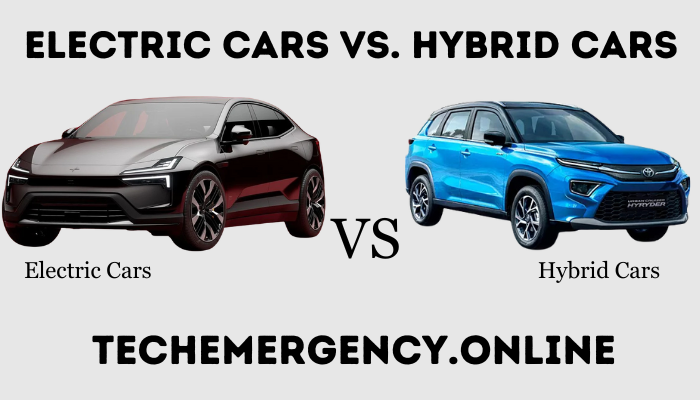As the world pushes toward pragmatic energy, clients logically face a choice between Electric cars (EVs) and hybrid cars (HEVs). Both partake in their advantages, notwithstanding, which is the better decision in 2025? This guide gives an exhaustive gander at the components, costs, benefits, and drawbacks of each, so you can finish up which vehicle type best suits your necessities and the scene of eco-obliging transportation.
-
Understanding Electric Vehicles (EVs)
What is an Electric Vehicle?
Electric vehicle are controlled only by an electric motor and battery pack, abstaining from the necessity for gas. They produce zero tailpipe radiations, which makes them innocuous to the biological system contrasted and standard internal combustion engine (ICE) vehicles.
Advantages of EVs
- Zero Emissions: EVs produce no discharges, settling on them a cleaner decision, particularly as more energy networks embrace inexhaustible sources.
- Lower Operating Costs: EVs are less expensive to run, as they don’t need gas and have fewer moving parts, diminishing upkeep costs.
- Quiet Operation: Without a gas powered motor, EVs offer a calmer driving encounter.
- Incentives and Rebates: Numerous state run administrations offer impetuses, tax reductions, and refunds for buying EVs, which can fundamentally lessen the forthright expense.
Disadvantages of EVs
- Charging Infrastructure: While improving, the accessibility of public charging stations differs, which can make long travel trying for EV clients.
- Range Limitations: EVs are restricted by their battery limit, although fresher models are arriving at scopes of 300 miles or more.
- Charging Time: Not at all like fuel cars, EVs find an opportunity to re-energize, with most home charging arrangements requiring a few hours for a full charge.
-
Understanding Hybrid Vehicles (HEVs)
What is a Hybrid Vehicle?
Hybrid vehicles utilize a blend of a gas motor and an electric engine. They naturally switch between the two power sources or utilize both all the while, expanding eco-friendliness.
Advantages of HEVs
- Extended Range: With both a gas motor and electric engine, crossovers can cover significant distances without expecting to stop for fuel as frequently as an EV would have to charge.
- Fuel Efficiency: HEVs utilize regenerative slowing down to re-energize the battery, making them more eco-friendly than traditional ICE vehicles.
- Reduced Emissions: While not altogether outflow free, cross breeds produce fewer discharges than gas vehicles because of their electric help.
Disadvantages of HEVs
- Maintenance Costs: Despite the fact that mixtures are more eco-friendly, they have both a motor and an electric engine, possibly expanding upkeep costs over the long haul.
- Limited All-Electric Range: Most crossovers can drive brief distances utilizing the electric engine alone, making them less harmless to the ecosystem than completely electric vehicles.
- Higher Initial Cost than Gasoline Cars: HEVs are by and large more costly than customary vehicles because of the joined innovation, despite the fact that they can be less expensive than certain EVs.
-
Cost Comparison: EVs vs. HEVs in 2025
Purchase Price and Incentives
In 2025, the expense of EVs is supposed to diminish, with progressions in battery innovation and creation scaling. Nonetheless, HEVs might in any case be marginally less expensive and forthright. Numerous state run administrations likewise offer motivations for the two sorts of vehicles, however, EV impetuses are in many cases more significant.
Operational Costs
EVs are for the most part more reasonable to work than HEVs, as power is less expensive than fuel, and EVs require less support. For instance, EVs don’t require oil changes, and their stopping mechanisms ordinarily last longer because of regenerative slowing down.
Resale Value
Resale worth can differ for the two EVs and HEVs. As EV battery innovation improves, the life expectancy of these batteries broadens, decidedly affecting their resale esteem. Notwithstanding, a few cross breeds hold great resale esteem too, particularly on the off chance that they’re from entrusted brands areas of strength for with productivity notorieties.
-
Environmental Impact
Emissions
EVs are viewed as zero-emanation vehicles, meaning they discharge no poisons at the tailpipe. Mixtures depend somewhat on gas, creating discharges however at a decreased level contrasted with customary vehicles.
Battery Disposal and Recycling
The two EVs and HEVs use lithium-particle batteries, which can have ecological effects when mined and discarded inappropriately. Luckily, progress in battery reusing and maintainable mining rehearses are decreasing these impacts. By 2025, more eco-accommodating reusing choices and second-life applications for batteries are supposed to be generally accessible.
Energy Source
One of the advantages of EVs is that they can be controlled by sustainable power whenever charged on a green lattice, possibly bringing about a net-zero emanation venture. HEVs, notwithstanding, still require gas, which attaches them to petroleum derivative utilization.
-
Charging and Refueling Convenience
EV Charging Networks in 2025
The EV charging foundation is developing quickly, with more open quick charging stations opening up around the world. Home charging arrangements are additionally improving, with new choices taking into consideration quicker charging speeds. Be that as it may, long travels might in any case present difficulties for EV drivers in regions where it is restricted to charge foundation.
Hybrid Refueling
One of the greatest benefits of half-breeds is the comfort of having the option to refuel at any service station. This wipes out “range tension” that some EV drivers experience on longer excursions. Mixtures additionally offer the accommodation of not expecting to design charging quits, making them more appropriate for countries or immature regions with restricted charging foundations.
-
Future of EV and HEV Technology
Battery Technology
Battery upgrades are supposed to help the two EVs and HEVs by 2025, with new materials like strong state batteries promising quicker charging times and more prominent energy thickness. This will probably upgrade the reach and reasonableness of EVs, making them a significantly more appealing choice.
Autonomous Driving Compatibility
Numerous EVs and HEVs are viable with independent driving elements, and these abilities are simply expected to develop. Brands like Tesla, Portage, and General Engines are incorporating self-driving innovation into their EV and HEV models, a pattern that will probably proceed and additionally separate these choices from conventional gas vehicles.
Sustainability Practices
Both EV and HEV makers are focusing on manageable assembling processes, like lessening carbon impressions, utilizing reused materials, and guaranteeing moral obtaining of battery parts. As maintainability turns out to be more essential to purchasers, this pattern is supposed to keep, making the two choices more eco-accommodating.
-
Which is Right for You: EV or HEV?
The decision between an EV and an HEV in 2025 depends largely on individual preferences, driving habits, and priorities.
- For Environmentally Conscious Drivers: EVs are the unmistakable champ concerning zero
- For Long-Distance or Rural Drivers: HEVs might be more useful, as they dispense with range tension and depend on the current corner store foundation.
- For Budget-Conscious Consumers: HEVs are in many cases more reasonable at first despite everything give further developed eco-friendliness, making them a pragmatic choice for those hoping to save money on forthright expenses.
- For Urban or Commuter Drivers: EVs are great for city driving, where brief distances and the accessibility of charging choices make them advantageous and savvy.
Conclusion
By 2025, the two EVs and HEVs offer convincing motivations to change from customary fuel vehicles. EVs are pushing the limits of economical travel, while half and halves give a decent change to greener driving. Mechanical progressions,
Further developed foundation, and more prominent openness are making the two choices progressively common for various types of drivers. Whether you focus on zero emanations, adaptability, or a mix of both, the decision among EVs and HEVs in 2025 relies upon what you esteem most as far as you can tell.




